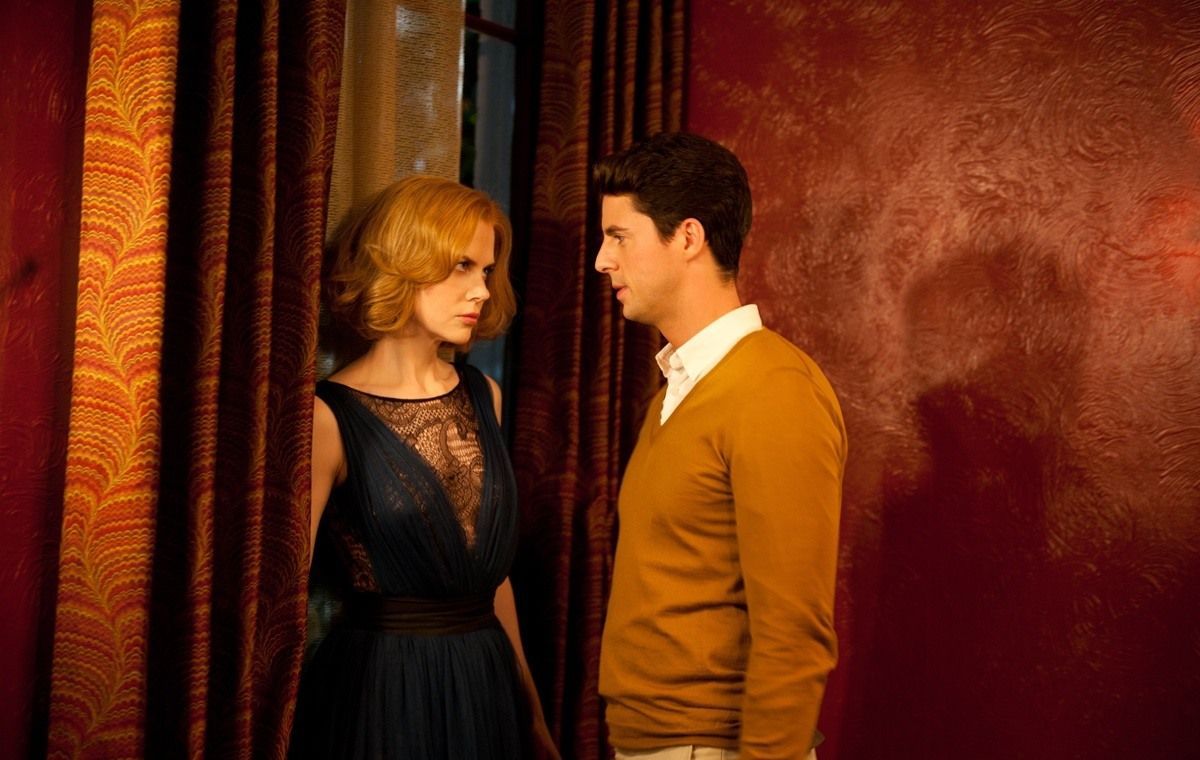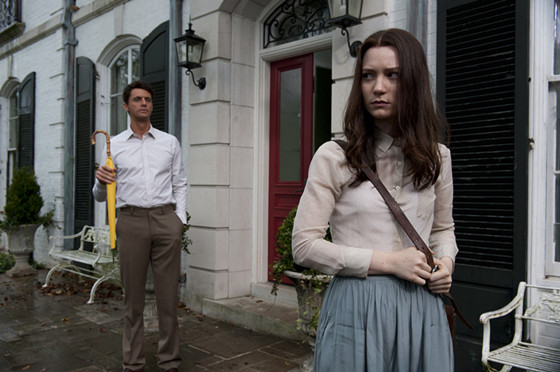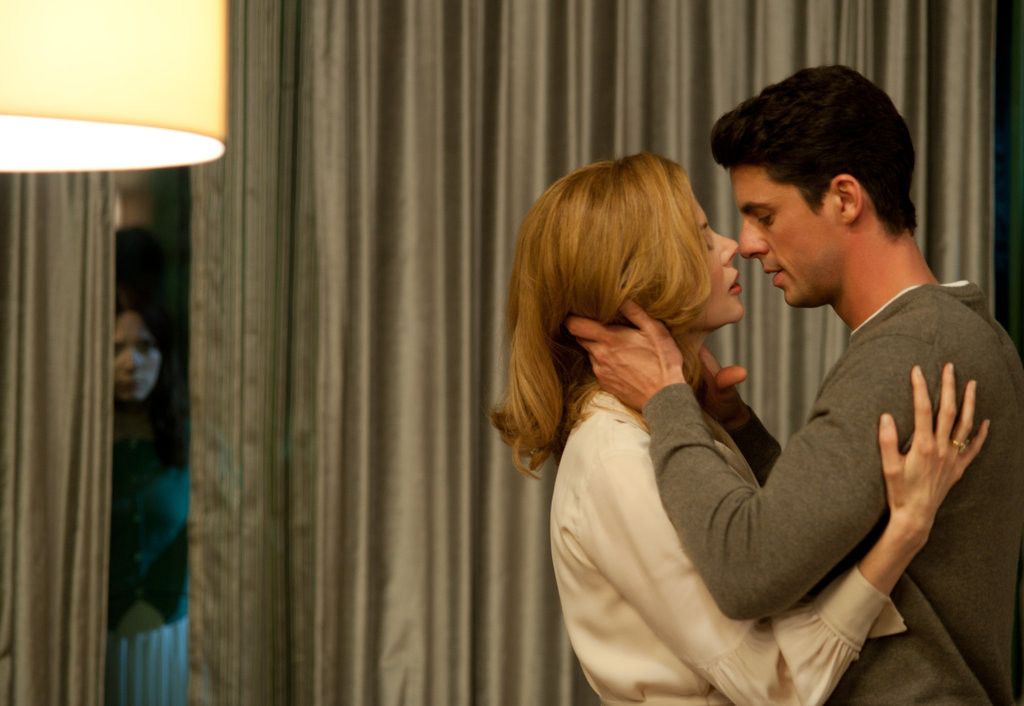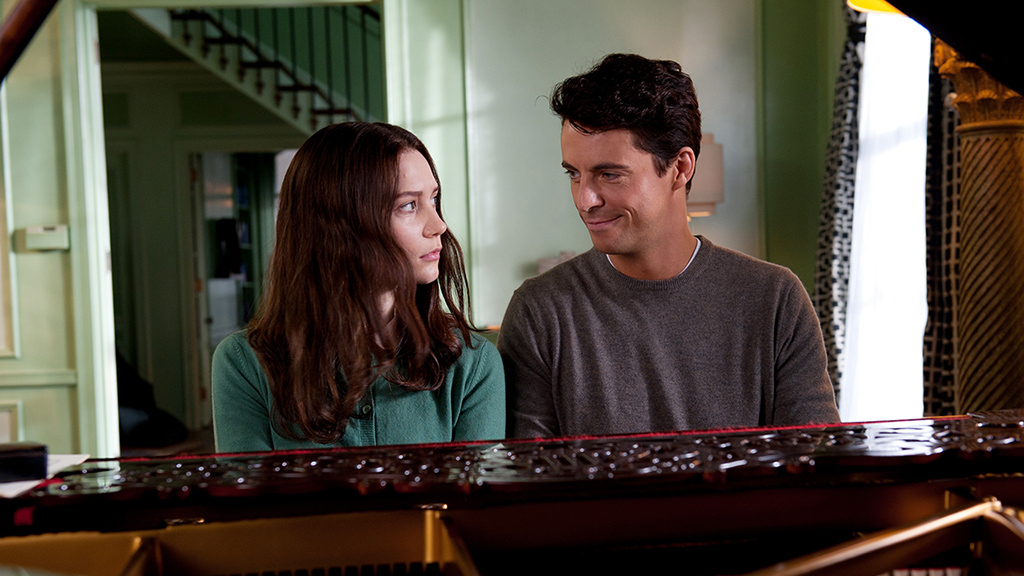
With the growing popularity South Korean cinema has been enjoying internationally, the transfer of Korean filmmakers to Hollywood was inevitable.
From the three directors that made the step, Park Chan-wook with “Stoker”, Kim Jee-woon with “The Last Stand”, and Bong Joon-ho with “Snowpiercer”, the first one was the most controversial film among the critics, since others considered it a masterpiece and others leveled it lower than Park’s South Korean productions and particularly “Oldboy”.
Evidently, Park’s English debut has some issues, as the South Korean did not adapt fully to Hollywood aesthetics, but “Stoker” remains a very competent film, while the things Park learned from its shooting definitely helped him change his style for the better in “The Handmaiden”. Here are five reasons that prove the point. Please note that the article contains many spoilers.
1. A great script with evident Hitchcock influences

The story begins on the 18th birthday of India, a laconic and detached girl who loses her father in a car accident on the same day. At the funeral, Charles, a mysterious uncle whose existence India ignored, makes an appearance.
Evelyn, India’s mother, seems enchanted by Uncle Charlie, although his interest seems to lie with India. His constant efforts to approach her are met with defensiveness, until India starts suspecting that her uncle harbors a number of dark secrets. The realization, however, actually draws her toward him instead of pushing her away, and in the process, reveals a self even she was not aware of.
The comparisons with Hitchcock’s “Shadow of a Doubt” are on point, since the script shares themes, plot devices, and motifs with the 1943 film. However, “Stoker” pushes to its limits what Hitchcock only implied in his film.
In that fashion, Wentworth Miller’s script is measured, with a distinct sense of direction and rhythm as it sets, elaborately, the context for the outbreaks in the story. Some holes in the script may be evident, particularly when the revelations begin, but in general, the story provides a great setting for Park to unfold his talent in a good direction.
Revenge as a concept is once more present, but this time is not the epicenter of the story. Instead, the focus lies with the battle between human instincts and acquired tendencies, and the effect nature has on people.
2. The coming-of-age concept through the eyes of Park Chan-wook

The central theme in “Stoker” is India’s coming-of-age in terms of sexuality, and the way Charlie influences the latter. India, in the beginning, is portrayed as a conservative and restrained girl, the direct opposite of Evelyn, whose sexuality and will to succumb to her brother-in-law’s seductive presence is more than evident.
However, and in a tactic much reminiscent of Nabokov’s “Lolita”, Charlie uses the mother in order to get closer to the daughter. His efforts to change the aversion India initially feels for him, to jealousy and subsequently desire, through cunning manipulation, is one of the main axes of the film.
Both of these axes, India’s sexual awakening and Charlie’s efforts at manipulation, are also presented through a number of symbolisms. The water dripping between India’s feet when she comes into the house, soaking wet from the rain; and the repeated theme of a spider crawling between her thighs and the fact that Charlie’s presence frequently coincides with the buzzing fly, present the concept that he is actually a persistent “insect”, trying in every way he can to enter between her legs. Lastly, the box India opens is a direct comparison with Pandora’s box, as it contains the evils of the story.
Park’s visage in all of the above emanates onerousness, as his characters are weird but captivating, and sexual desire seems to be inseparable from everything dark and fearful that lurks into human hearts. In that fashion, everyday objects transform into lethal weapons, and the coming-of-age of a girl becomes a concept filled with death and perversion.
Park’s control over the gradual building and the retaining of this macabre atmosphere through the occasionally hypnotic pace of the film is more than impressive. His direction succeeds in making it memorable even in the moments when the symbolism becomes a bit cheesy, like the change of India’s girly shoes to pumps, which, in the hands of a less experienced filmmaker, could be considered as samples of a lack of inspiration.
3. Great cast

The acting in “Stoker” is definitely on a very high level. Nicole Kidman as Evelyn, who has left behind any kind of modern medicinal tricks to stay youthful (which had made her face look unnatural), gives a wonderful performance. She portrays a sexual woman who is rather open to Charlie’s seduction and occasionally seems feeble-minded and naive, as her only purpose seems to be getting drunk and making observations on etiquette.
This sense, however, is completely changed in her sole monologue, which presents another nature, one that’s at least as perverse as the other characters, and at the same time is one of the most memorable scenes in the film.
The one who steals the show, though, is Mia Wasikowska as India, who actually anchors the film with her portrayal of an over-sensitive young woman who experiences a rather perverse sexual awakening through her uncle’s seductive presence. Her role is quite difficult as a woman whose soul is dark, but she manages to make the audience to sympathize with India, in a role that could easily end up monotonous and stripped of emotion.
In particular, her transformation from a girl who is not sure of herself to a disillusioned woman who knows exactly what she wants, is one of the most captivating aspects of the movie.
Matthew Goode is also great as Uncle Charles, in a quite complex role that demands of him to be the sociopathic villain, the gentleman, the apple of discord, and the seducer all at the same time. His acting emits a dignity that perfectly suits the aesthetics of the film.
4. Cinematography and production design combining South Korean and Hollywood aesthetics

Park Chan-wook’s regular collaborator, Chung Chung-hoon, is in charge of the film’s cinematography, just as he was in “The Vengeance Trilogy” and “Thirst”. This time he uses a combination of Kodak stock film and Zeiss Master Prime, which results in clean and very high quality image. The colors are much brighter than the ones in Park’s previous films, in an evident influence of Hollywood aesthetics.
His attention to every detail, as presented through close-ups and cut-ins, is once more present, while his use of light remains impeccable, as it is always natural and justified, emitting from doors and windows in a way that seems utterly realistic. His use of soft light and a lack of shadows result in the film retaining a calm and elegant atmosphere, which provides a great antithetic setting for the tension that arises among the characters.
His camera is always steady, with very few exceptions. One of them, though, which occurs when Evelyn loses her calm and seemingly detached composure, remains one of the most memorable in the film. The camera movements perfectly fit Park’s aesthetics, with this elaborateness reaching its apogee in the piano scene.
The same elaborateness is also present in Therese DePrez’s production design, which serves in order to present the character’s composition in visual terms. This trait finds its apogee in the women’s bedrooms. India’s is “dressed” with a yellow-patterned wall paper, while her things are lined up perfectly, mirroring her character’s predisposition for order. On the other hand, Evelyn’s is completely chaotic.
5. The piano scene

India is initially alone practicing the piano when Charlie suddenly appears and proceeds to compliment what she is playing. Eventually he sits next to her and ups the tempo, in an act that she takes as a challenge, subsequently proceeding into something more complex as she defiantly looks at him. However, he matches her every movement as the music becomes more complex and then proceeds to sit behind her, putting one arm around her in a peculiar embrace, while he continues playing.
At this point, she surrenders to both him and the music while the sexual tension becomes palpable, with her becoming utterly succumbed to it. When she manages to find the courage to actually look at him, he is already gone.
The scene is wordless, but is filled with subtext as the shifting dynamics become clear through the positions of the two characters. It is also filled with sexual tension that is heightened by India’s eventual unraveling that looks as though he has her under a spell.
The scenes exemplify Park’s cinema, as the music by Philip Glass, the editing, and the camera movement are perfectly synchronized in an audiovisual poem that deems words unnecessary.
Author Bio: Panos Kotzathanasis is a film critic who focuses on the cinema of East Asia. He enjoys films from all genres, although he is a big fan of exploitation. You can follow him on Facebook or Twitter.